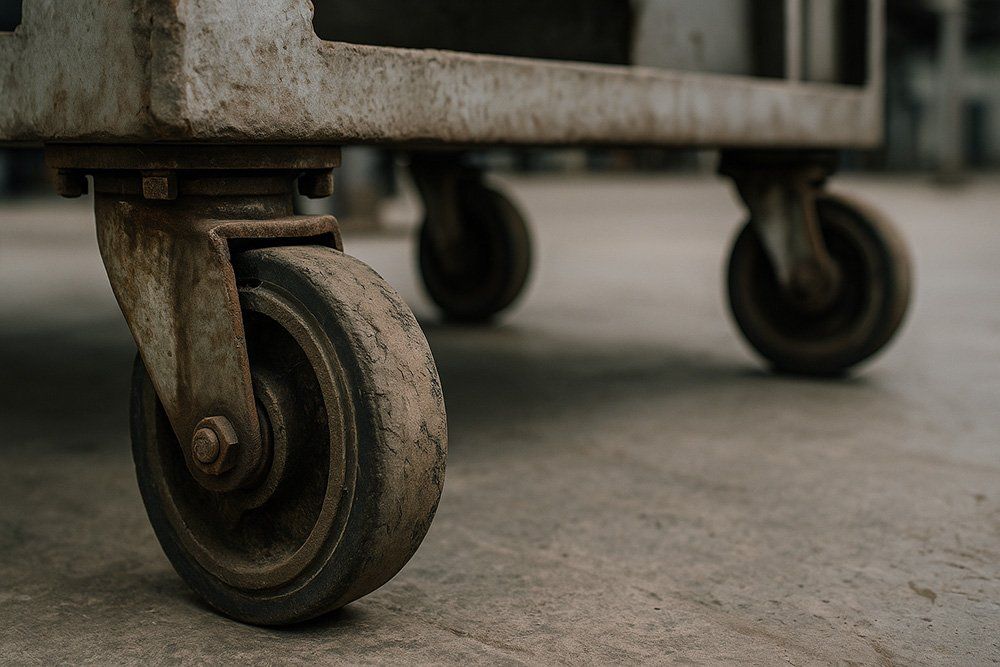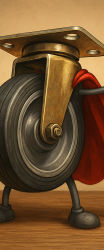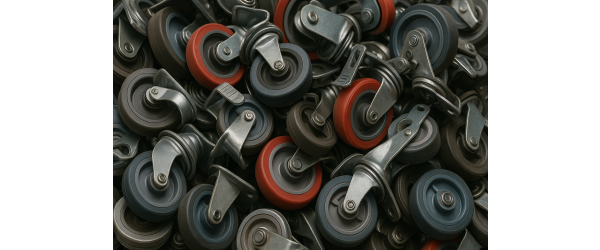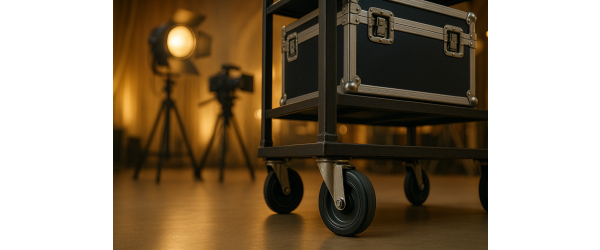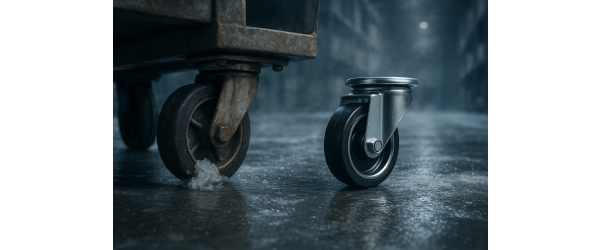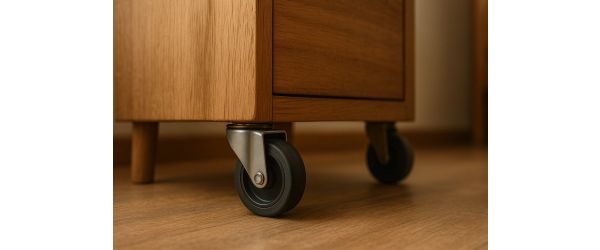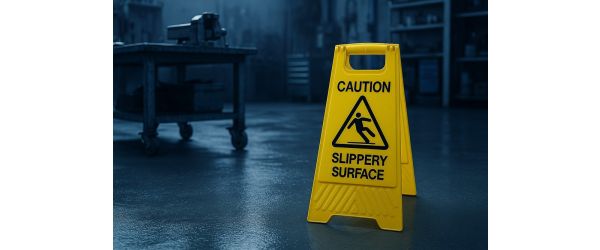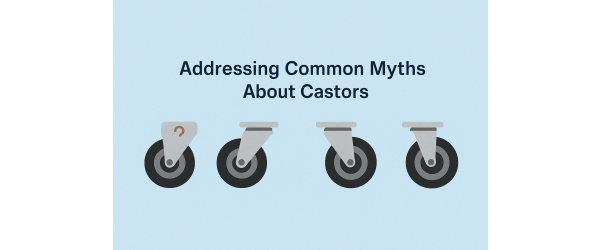Castors are some of the hardest-working components in any workshop, warehouse, or office. They bear weight, absorb shocks, and roll over all kinds of surfaces – but because they’re small and out of sight, they’re often neglected until they fail. Knowing when to replace your castors can save money, prevent damage, and keep your equipment safe and mobile.
Why Castor Wear Matters
A worn or damaged castor doesn’t just make movement difficult. It can cause uneven rolling, increase strain on other castors, and even damage floors or the equipment itself. Poorly maintained wheels can lead to workplace accidents or delays, particularly when moving heavy loads or delicate tools.
Telltale Signs Your Castors Need Replacing
Check your castors regularly for the following warning signs:
- Stiff or uneven rolling: Indicates worn bearings or dirt build-up.
- Visible damage: Cracks, flat spots, or chunks missing from the tread.
- Corrosion: Rust on metal parts reduces strength and safety.
- Noise or vibration: Excessive rattling can signal misalignment or internal damage.
- Brakes that slip: A common issue in older or heavily used trolleys.
If any of these appear, it’s likely time to replace your wheels. Explore our range of replacement castors and wheels for suitable options.
Common Causes of Castor Failure
Most damage can be traced to three main issues:
- Overloading:
Exceeding the castor’s weight rating puts stress on bearings and frames. - Poor floor conditions: Rough, uneven, or dirty surfaces wear treads faster.
- Lack of maintenance: Dirt, moisture, and lack of lubrication shorten lifespan.
Choosing the right material for your environment helps prevent these problems. For instance, rubber castors are excellent for indoor floors, while nylon castors perform well on hard, smooth surfaces.
Inspecting and Maintaining Castors
A quick monthly check can keep your castors in top shape:
- Remove any tangled debris, such as string or tape.
- Ensure mounting bolts are tight and secure.
- Check bearings for rust or stiffness.
- Apply a small amount of lubricant to the axle if needed.
For damp or corrosive settings, consider switching to stainless steel castors to prevent rust and extend lifespan.
How to Replace Castors Safely
When it’s time for new wheels, follow these steps for a safe replacement:
- Identify the fitting: Determine if your castor is plate-mounted, bolt-hole, or stem-fitted.
- Measure carefully: Note wheel diameter, mounting size, and bolt spacing.
- Match the load rating: Check that your new castor can handle the same or greater weight.
- Fit securely: Replace all castors together for even height and stability.
- Test before use: Roll the equipment to ensure smooth, balanced movement.
Our range of industrial castors includes all major mounting types and weight capacities, making it easy to find a direct replacement.
Preventing Future Problems
To reduce the frequency of replacement:
- Avoid dragging loads sideways – it damages bearings.
- Keep floors swept and dry.
- Rotate trolleys and equipment regularly to distribute wear evenly.
- Schedule annual inspections for all mobile units.
A little preventive care goes a long way in extending the lifespan of your equipment and avoiding unexpected breakdowns.
Conclusion
Castors may be small, but their role in keeping workplaces moving is enormous. By checking for signs of wear and replacing them promptly, you can maintain safety, efficiency, and smooth performance across your site. Investing in durable, well-matched castors ensures your equipment stays reliable for years to come.
